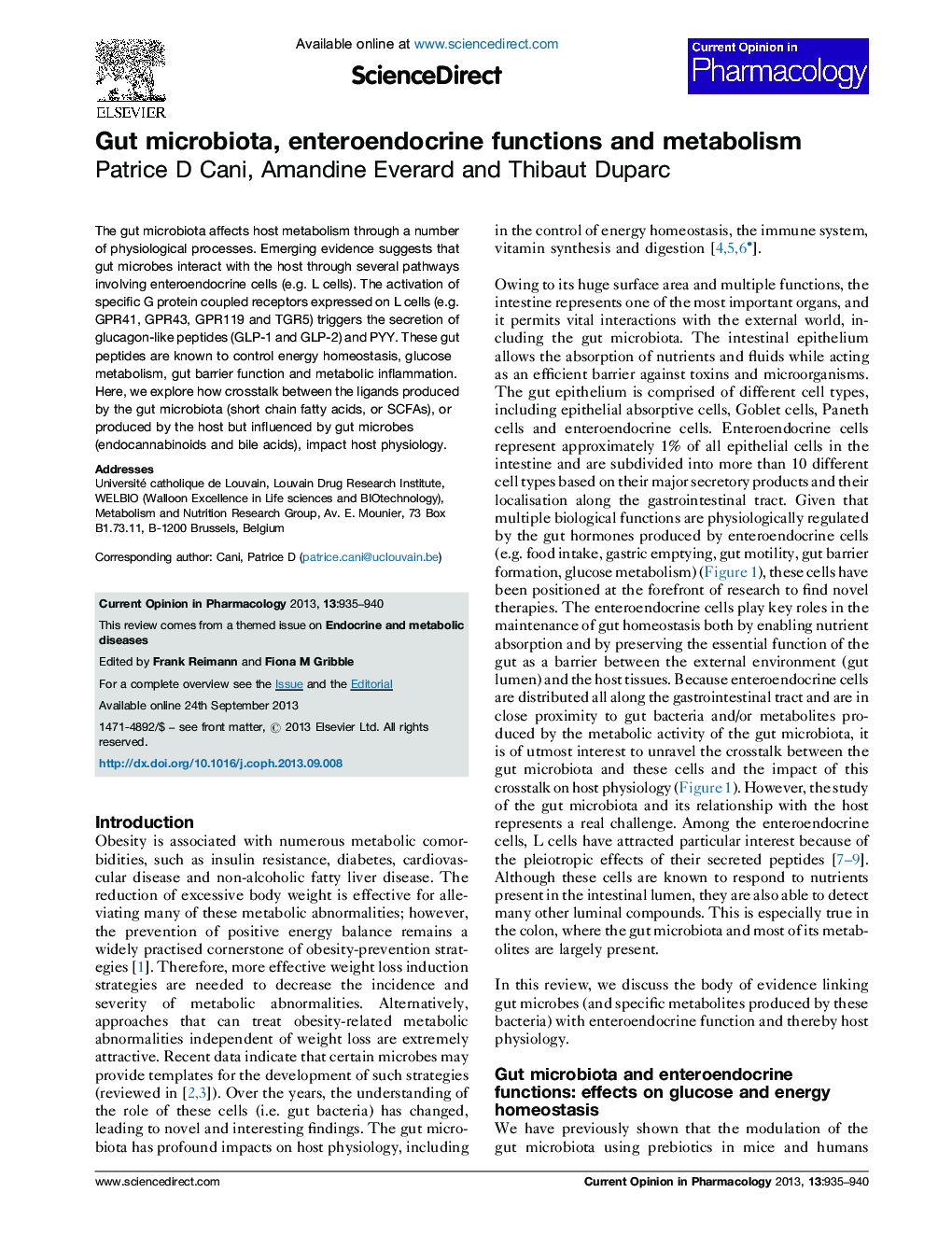| Article ID | Journal | Published Year | Pages | File Type |
|---|---|---|---|---|
| 5826244 | Current Opinion in Pharmacology | 2013 | 6 Pages |
â¢The gut microbiota interacts with enteroendocrine cells.â¢SCFAs triggers gut peptide secretion through GPR43-dependent and GPR41-dependent mechanisms.â¢The gut microbiota links the endocannabinoid system to L cell functions.â¢A. muciniphila interacts with enteroendocrine cells to modulate gut barrier function.â¢Several GPCRs expressed on intestinal L cells may constitute putative therapeutic targets.
The gut microbiota affects host metabolism through a number of physiological processes. Emerging evidence suggests that gut microbes interact with the host through several pathways involving enteroendocrine cells (e.g. L cells). The activation of specific G protein coupled receptors expressed on L cells (e.g. GPR41, GPR43, GPR119 and TGR5) triggers the secretion of glucagon-like peptides (GLP-1 and GLP-2) and PYY. These gut peptides are known to control energy homeostasis, glucose metabolism, gut barrier function and metabolic inflammation. Here, we explore how crosstalk between the ligands produced by the gut microbiota (short chain fatty acids, or SCFAs), or produced by the host but influenced by gut microbes (endocannabinoids and bile acids), impact host physiology.
